Smart Temp Communities: Lida Group Integrates IoT Systems into Temporary Container Buildings via Prefab Construction Networks
2025-Jul-30 15:15:25
By Admin
1. Introduction
In an era marked by rapid urbanization, natural disasters, and large-scale infrastructure projects, the demand for temporary housing and community solutions has surged. Traditional temporary settlements often lack basic amenities, suffer from poor connectivity, and fail to adapt to the dynamic needs of residents. These communities, whether for disaster relief, construction worker accommodations, or event housing, require not just shelter but also efficiency, safety, and a decent quality of life.
Lida Group, a leader in prefabricated construction since 1993, has been at the forefront of addressing these challenges. With a diverse portfolio including labor camps, steel structure buildings, container houses, and prefab houses, the company has consistently delivered innovative solutions. Holding international certifications such as ISO 9001, ISO 14001, ISO 45001, and EU CE certification (EN 1090), Lida Group combines quality with sustainability. Its global network of seven subsidiaries and overseas branches enables it to deploy solutions worldwide. Now, Lida Group is revolutionizing temporary communities by integrating IoT (Internet of Things) systems into temporary container buildings through its advanced prefab construction networks, creating what are known as “Smart Temp Communities.”

2. The Need for Smart Temporary Communities
2.1 Challenges in Traditional Temporary Settlements
Traditional temporary communities are plagued by numerous issues. One of the most pressing is poor resource management. Energy and water are often wasted due to inefficient systems, leading to higher operational costs and environmental impact. For example, in many construction worker camps, electricity is consumed excessively because of outdated lighting and appliances, while water is wasted due to leaky pipes and lack of monitoring.
Safety is another critical concern. These communities often lack proper security measures, making residents vulnerable to theft and accidents. Fire safety is particularly problematic, as temporary structures are sometimes built with flammable materials and lack smoke detectors or sprinkler systems. In the event of a fire, the spread can be rapid, endangering lives.
Communication and connectivity are also major drawbacks. Residents in traditional temporary communities often have limited access to reliable internet, which hinders their ability to stay in touch with family, access information, or even work remotely. This isolation can have a negative impact on mental health and overall well-being.
2.2 Evolving Demands of Residents
Today’s residents of temporary communities have higher expectations. They seek not just a roof over their heads but also a comfortable and convenient living environment. For construction workers, who spend long hours on the job, a temporary home that offers restful sleep, proper hygiene facilities, and even recreational spaces is essential for productivity.
In disaster relief scenarios, displaced families require temporary housing that provides a sense of normalcy. This includes access to clean water, electricity, and a safe space for children to play. Additionally, they need efficient communication channels to receive updates on relief efforts and reconnect with loved ones.
Event-goers, such as those attending music festivals or sports events, expect temporary accommodations that are not only functional but also offer modern amenities. This might include charging stations for electronic devices, climate control, and easy access to food and beverage services.
2.3 Role of Technology in Modernizing Temporary Housing
Technology has the potential to transform temporary communities. IoT, in particular, can address many of the challenges faced by traditional settlements. By connecting devices and systems, IoT enables real-time monitoring and management of resources, enhances safety, and improves communication. For example, smart meters can track energy and water usage, allowing for more efficient distribution. Sensors can detect fires or gas leaks, triggering immediate alerts. And wireless networks can provide reliable internet access, keeping residents connected.
The integration of IoT into temporary housing also allows for data-driven decision-making. By analyzing data collected from various sensors, managers can identify patterns and optimize operations. This not only reduces costs but also improves the quality of life for residents.
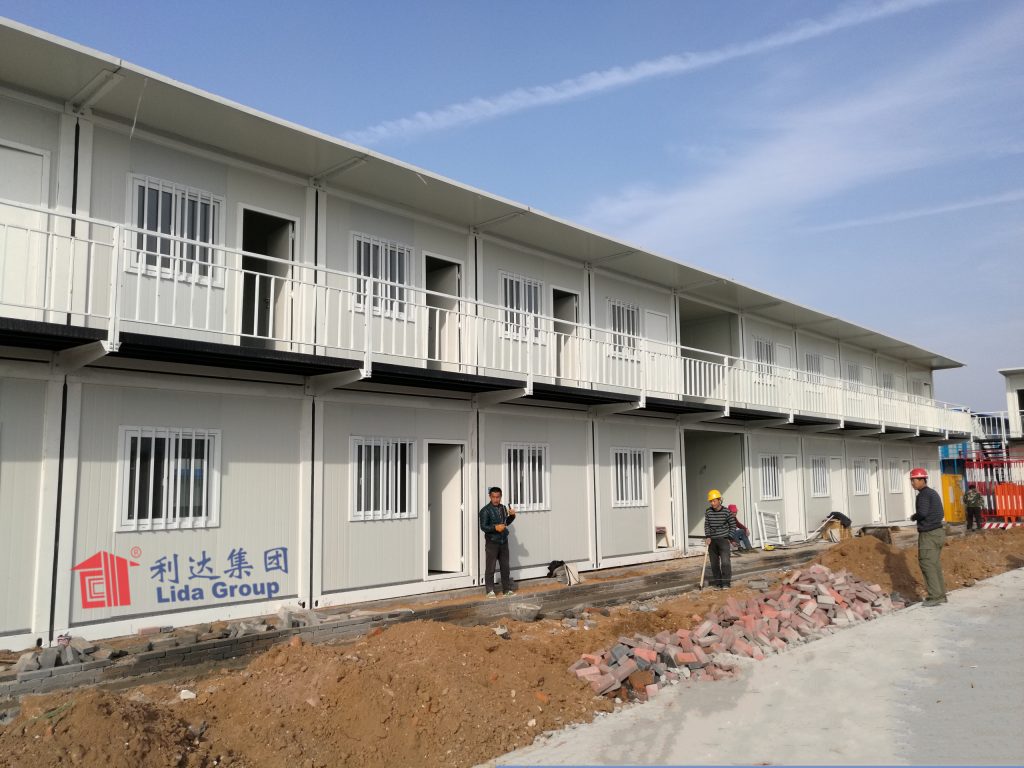
3. Lida Group’s Prefab Construction Networks: The Foundation
3.1 Modular Container Design
At the core of Lida Group’s Smart Temp Communities is its modular container design. These containers are built in controlled factory environments, ensuring precision and quality. The modular approach allows for easy customization, as containers can be combined in various configurations to create different types of living spaces, from single rooms to multi-bedroom units, as well as communal areas like kitchens, bathrooms, and recreation rooms.
The containers are constructed using high-quality steel, making them durable and resistant to harsh weather conditions. They are also insulated to provide thermal comfort, ensuring that residents stay cool in summer and warm in winter. This insulation not only improves comfort but also reduces energy consumption, aligning with sustainable practices.
3.2 Efficient Production and Deployment
Lida Group’s prefab construction networks enable efficient production and deployment of container buildings. The factory-based manufacturing process allows for mass production, reducing construction time significantly compared to traditional on-site building. Containers can be produced in large quantities and then transported to the site, where they are quickly assembled.
This efficiency is crucial for meeting the urgent needs of temporary communities, such as those established after a natural disaster. Lida Group’s ability to deploy container buildings within days or weeks, rather than months, ensures that residents can move into safe and functional housing as soon as possible.
The deployment process is also streamlined. Containers are designed to be easily transported by truck, ship, or rail, making them accessible even in remote locations. Once on-site, they are connected using standardized fittings, minimizing the need for complex on-site construction work.
3.3 Scalability and Adaptability
Lida Group’s prefab construction networks offer scalability and adaptability, which are essential for temporary communities. As the number of residents changes, additional containers can be added to the community, or existing ones can be removed. This flexibility allows the community to grow or shrink according to demand, avoiding waste and ensuring efficient use of resources.
The adaptability of the container design also means that the community can be repurposed for different uses. For example, a container community built for construction workers can be converted into housing for disaster victims or event attendees with minimal modifications. This reusability reduces the environmental impact of temporary housing, as containers are not discarded after a single use.
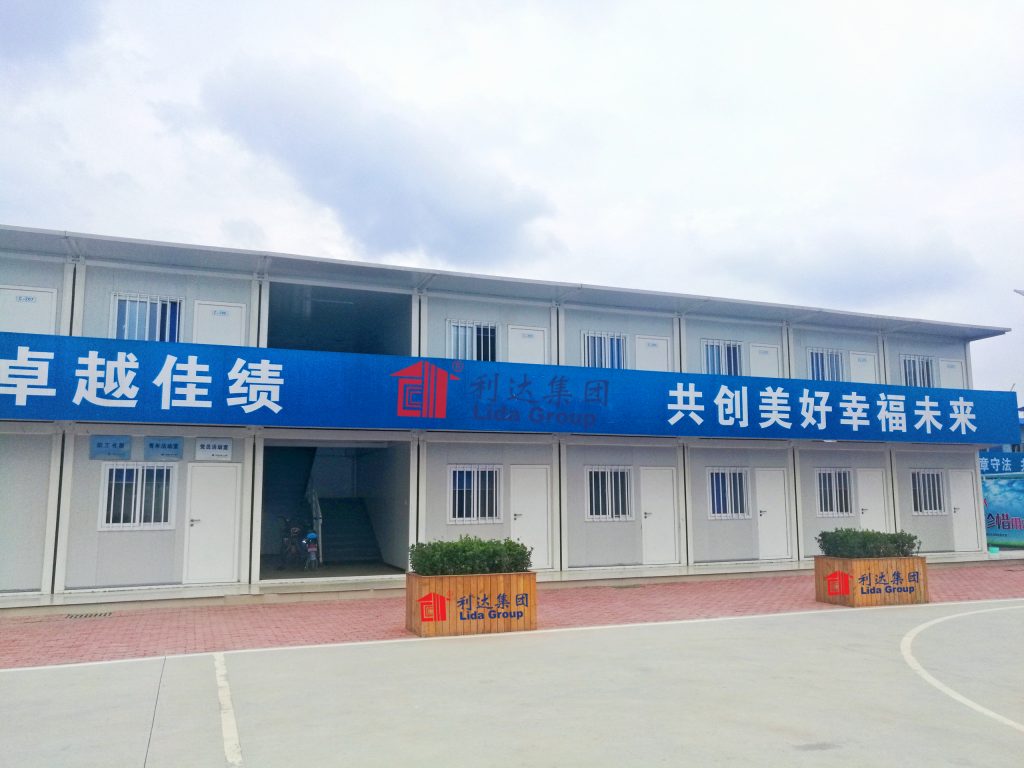
4. Integration of IoT Systems into Container Buildings
4.1 Smart Energy Management
Lida Group integrates IoT systems to create smart energy management in its container buildings. Each container is equipped with smart meters that monitor electricity usage in real-time. These meters are connected to a central system, which collects and analyzes data to identify patterns of energy consumption. Managers can then use this information to optimize energy distribution, reducing waste and lowering costs.
Smart lighting is another feature of the energy management system. LED lights with motion sensors are installed in common areas and living spaces, ensuring that lights are only on when needed. This reduces energy consumption significantly compared to traditional lighting systems.
In addition, renewable energy sources such as solar panels can be integrated into the container buildings. IoT systems monitor the output of solar panels and manage the storage of excess energy in batteries, ensuring a reliable supply of electricity even when the grid is unavailable. This not only reduces reliance on fossil fuels but also makes the community more self-sufficient.
4.2 Intelligent Water and Waste Management
Water conservation is a key focus of Lida Group’s Smart Temp Communities. IoT sensors are installed in water pipes and fixtures to detect leaks and monitor water usage. The central system alerts managers to leaks, allowing for prompt repairs and preventing water waste. Smart showers and faucets with flow restrictors also help reduce water consumption without compromising on comfort.
Waste management is another area where IoT systems make a difference. Smart waste bins are equipped with sensors that monitor fill levels. When a bin is full, the system sends an alert to waste collection teams, ensuring that bins are emptied on a timely basis. This reduces the risk of overflowing bins, which can cause hygiene issues and attract pests.
The data collected from water and waste management systems is also used to educate residents about their consumption habits, encouraging them to adopt more sustainable practices.
4.3 Enhanced Security and Safety Systems
IoT integration enhances security and safety in Lida Group’s temporary container communities. Smart locks are installed on container doors, allowing residents to access their units using key cards or mobile apps. This eliminates the need for physical keys, reducing the risk of loss or theft. The central system tracks access, providing a record of who enters and exits each container, which can be useful in the event of a security incident.
Surveillance cameras with IoT capabilities are placed throughout the community, monitoring common areas and entry points. These cameras can detect unusual activity and send alerts to security personnel, enabling a quick response. Fire and smoke detectors are also connected to the IoT system, triggering alarms and notifying authorities in case of a fire. Gas sensors detect leaks, automatically shutting off the gas supply and alerting residents and managers.
4.4 Connectivity and Communication Infrastructure
Reliable connectivity is a cornerstone of Lida Group’s Smart Temp Communities. The company installs high-speed Wi-Fi networks throughout the community, ensuring that residents have access to the internet for work, communication, and entertainment. IoT systems manage the network, optimizing bandwidth allocation to ensure smooth performance even during peak usage.
In addition to Wi-Fi, the community is equipped with a smart communication system. This includes digital signage that displays important information such as announcements, weather updates, and event schedules. Residents can also receive notifications via mobile apps, keeping them informed about community activities and any emergencies.
The communication infrastructure also facilitates communication between residents and management. Residents can use the mobile app to report maintenance issues, request services, or provide feedback, ensuring that their needs are addressed promptly.
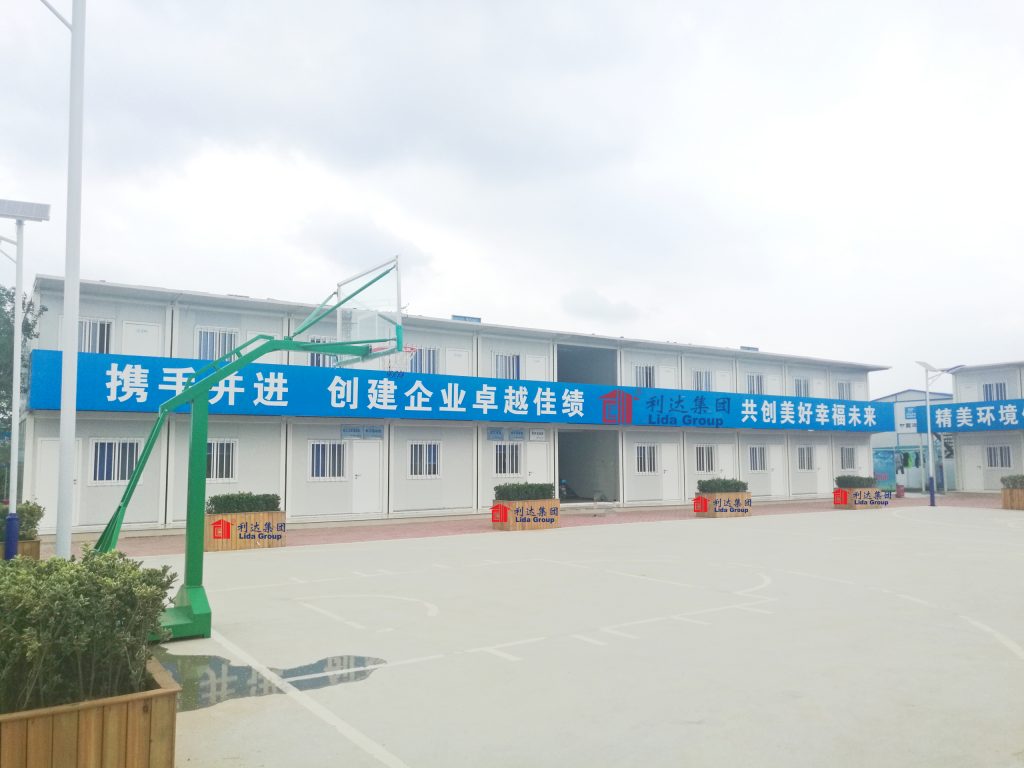
5. Features and Benefits of Smart Temp Communities
5.1 Improved Quality of Life for Residents
The integration of IoT systems into Lida Group’s container buildings significantly improves the quality of life for residents. Smart energy and water management ensure a reliable supply of utilities, while efficient climate control systems maintain a comfortable living environment. The availability of high-speed internet and communication tools helps residents stay connected with the outside world, reducing feelings of isolation.
Safety features such as smart locks, surveillance cameras, and fire detectors provide residents with peace of mind, knowing that they are living in a secure environment. Communal areas equipped with smart amenities, such as charging stations and entertainment systems, foster a sense of community and allow residents to socialize and relax.
5.2 Cost Efficiency and Resource Optimization
Smart Temp Communities are highly cost-effective. By monitoring and optimizing energy and water usage, these communities reduce operational costs. The use of renewable energy sources further lowers energy bills, making the communities more affordable to run.
The efficient waste management system reduces the cost of waste collection and disposal, while the scalability of the container design ensures that resources are not wasted on unused housing units. The data-driven approach to management also allows for better budgeting and planning, ensuring that funds are allocated where they are most needed.
5.3 Real-Time Monitoring and Management
The IoT systems in Smart Temp Communities provide real-time monitoring and management capabilities. Managers can access the central system from anywhere, allowing them to track energy and water usage, monitor security, and address maintenance issues promptly. This real-time visibility enables proactive management, reducing the risk of problems escalating and minimizing downtime.
For example, if a water leak is detected, the system alerts managers immediately, who can dispatch a repair team to fix the issue before it causes significant damage. Similarly, if energy usage spikes, managers can investigate the cause and take steps to reduce consumption.
5.4 Environmental Sustainability
Lida Group’s Smart Temp Communities are designed with environmental sustainability in mind. The use of prefabricated container buildings reduces construction waste, as modules are built to precise specifications in factories. The integration of renewable energy sources and smart resource management systems minimizes the community’s carbon footprint.
Water conservation measures, such as smart fixtures and leak detection, reduce water usage, while efficient waste management systems promote recycling and reduce the amount of waste sent to landfills. The reusability of container buildings also contributes to sustainability, as they can be repurposed for multiple projects, reducing the need for new construction.
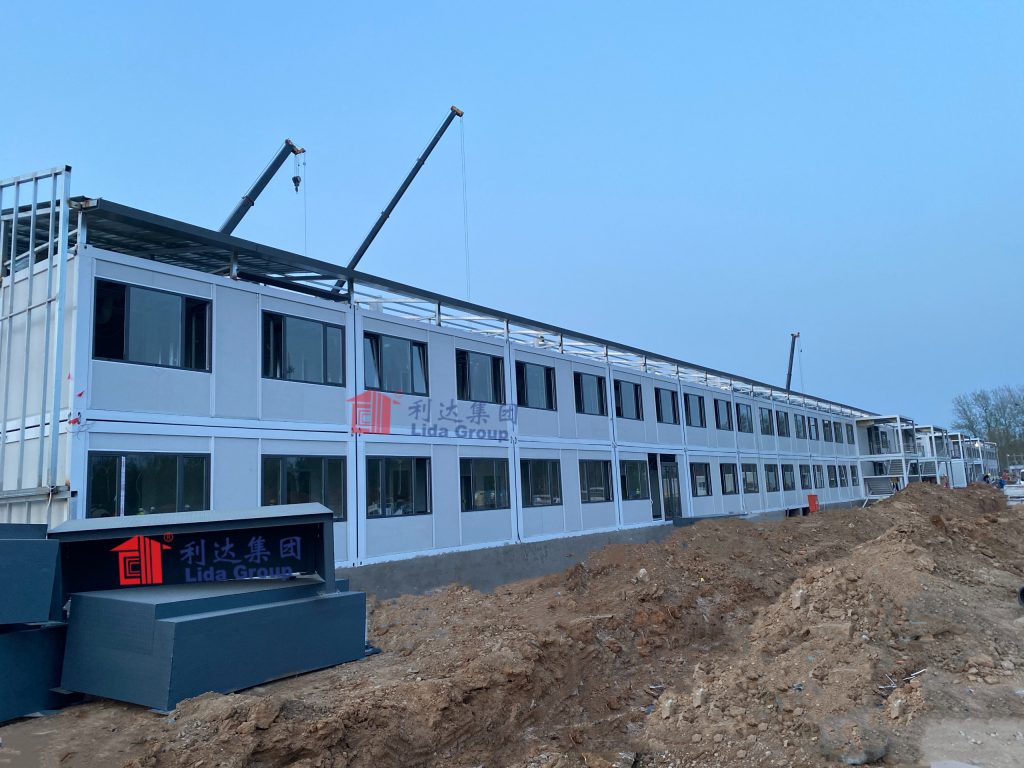
6. Case Studies: Lida Group’s Smart Temp Communities in Action
6.1 Construction Worker Camp for a Large Infrastructure Project
A major infrastructure project in a remote area required housing for thousands of construction workers for several years. Lida Group was commissioned to build a Smart Temp Community to accommodate these workers. The community consisted of hundreds of container modules, including living quarters, dining facilities, recreation rooms, and medical clinics.
IoT systems were integrated to manage energy and water usage. Smart meters monitored electricity consumption, and solar panels provided a significant portion of the community’s energy needs. Water sensors detected leaks, and smart showers reduced water usage by 30% compared to traditional systems.
The security system included smart locks, surveillance cameras, and fire detectors, ensuring the safety of workers. High-speed Wi-Fi allowed workers to communicate with their families and access online training resources. The real-time monitoring system enabled managers to quickly address maintenance issues, ensuring that the community ran smoothly.
Workers reported a significant improvement in their quality of life compared to previous temporary accommodations. The efficient management of resources also resulted in cost savings for the project, making the Smart Temp Community a successful solution.
6.2 Disaster Relief Community After a Natural Calamity
Following a devastating hurricane, a coastal region was left with thousands of displaced residents in need of temporary housing. Lida Group deployed a Smart Temp Community within weeks, providing shelter for over 500 families. The community included container homes, a community center, a school, and medical facilities.
IoT systems played a crucial role in the relief effort. Smart energy management ensured a reliable electricity supply, even in the aftermath of the storm, with solar panels and batteries providing backup power. Water management systems monitored usage and detected leaks, ensuring that clean water was available to all residents.
The security system helped maintain order in the community, while the communication infrastructure allowed residents to stay in touch with relief organizations and loved ones. The digital signage displayed important information about relief efforts, medical services, and school schedules, keeping residents informed.
The Smart Temp Community provided a safe and comfortable environment for displaced families, helping them rebuild their lives while the region recovered. The scalability of the community allowed for additional housing units to be added as more families arrived, ensuring that everyone had a place to stay.
6.3 Temporary Housing for a Major Sporting Event
A city hosting a major sporting event needed temporary housing for thousands of visitors. Lida Group built a Smart Temp Community near the event venue, consisting of container apartments with modern amenities. The community also included restaurants, shops, and entertainment areas.
IoT systems enhanced the visitor experience. Smart climate control allowed visitors to adjust the temperature in their apartments using a mobile app, while smart lighting automatically adjusted based on natural light levels. High-speed Wi-Fi and digital signage kept visitors informed about event schedules, transportation options, and local attractions.
The energy management system optimized electricity usage, reducing the community’s environmental impact. The waste management system ensured that trash was collected efficiently, maintaining a clean and hygienic environment.
Visitors praised the convenience and comfort of the Smart Temp Community, noting that it felt like a “home away from home.” The success of the community demonstrated the potential of IoT-integrated temporary housing for large-scale events.
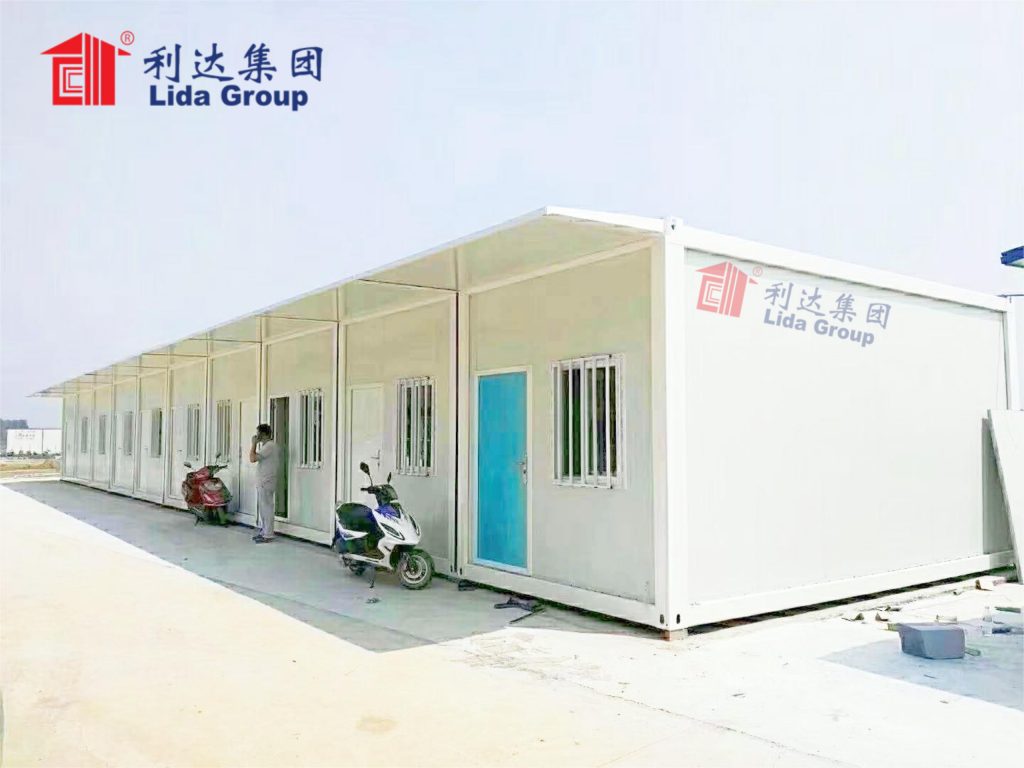
7. Comparison with Traditional Temporary Communities
7.1 Quality of Life
Traditional temporary communities often lack basic amenities and suffer from poor living conditions. Residents may have to contend with unreliable utilities, inadequate security, and limited connectivity. In contrast, Lida Group’s Smart Temp Communities offer a high quality of life, with reliable utilities, advanced security systems, and high-speed internet. The smart amenities and communal areas enhance comfort and foster a sense of community, making residents feel more at home.
7.2 Cost and Efficiency
Traditional temporary communities are often expensive to operate due to inefficient resource management. High energy and water bills, along with costly waste disposal, can strain budgets. Smart Temp Communities, on the other hand, use IoT systems to optimize resource usage, reducing operational costs. The efficient production and deployment of container buildings also lower construction costs, making them a more cost-effective solution.
7.3 Safety and Security
Safety is a major concern in traditional temporary communities, which often lack proper security measures. Theft, accidents, and fires are more common, putting residents at risk. Smart Temp Communities address these issues with advanced security systems, including smart locks, surveillance cameras, and fire detectors. The real-time monitoring capabilities ensure that any security threats are detected and addressed promptly, providing residents with a safer living environment.
7.4 Environmental Impact
Traditional temporary communities have a significant environmental impact, with high energy consumption, water waste, and construction debris. Smart Temp Communities, however, are designed to be sustainable. The use of prefabricated containers reduces construction waste, while IoT systems optimize resource usage. Renewable energy sources and efficient waste management further minimize the community’s carbon footprint, making them a more environmentally friendly option.
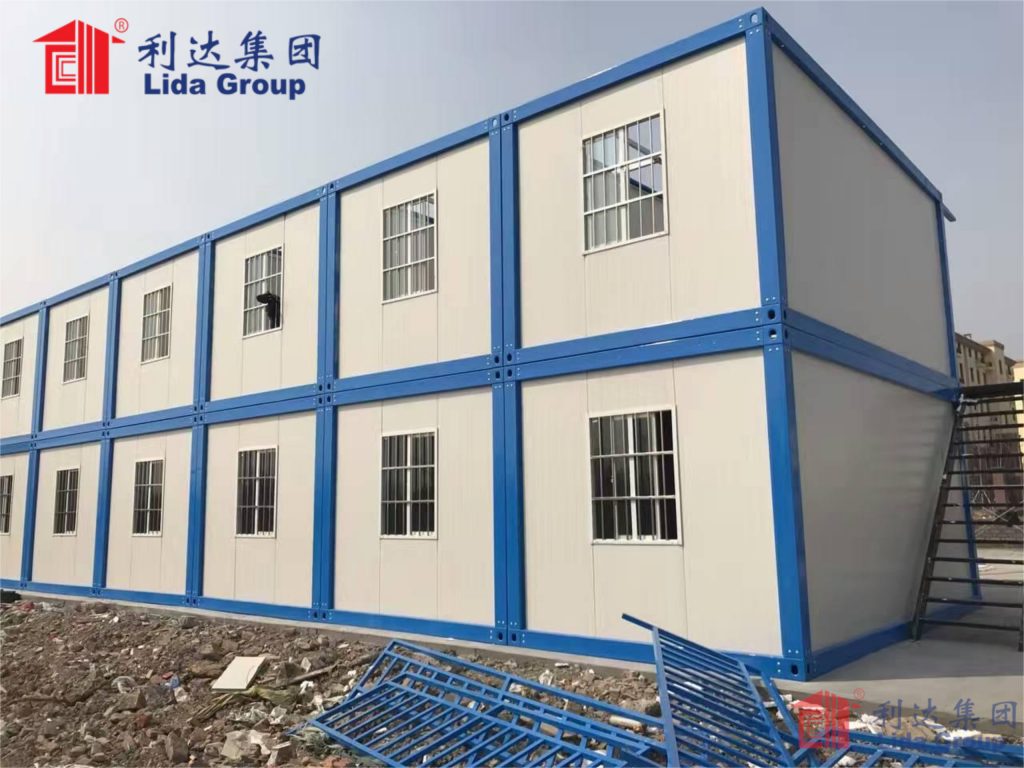
8. Future Trends in Smart Temp Communities
8.5 Advanced IoT Integration
The future of Smart Temp Communities will see even more advanced IoT integration. Artificial intelligence (AI) will be used to analyze data collected from IoT sensors, enabling predictive maintenance and more efficient resource management. For example, AI algorithms could predict when a piece of equipment is likely to fail, allowing for proactive repairs before a breakdown occurs.
Edge computing will also play a role, allowing data processing to occur closer to the source, reducing latency and improving the performance of IoT systems. This will be particularly useful in remote communities where internet connectivity is limited.
8.6 Integration with Smart Cities
As smart cities continue to develop, Smart Temp Communities will become integrated with these urban ecosystems. This will allow for seamless sharing of resources, such as energy and water, between the temporary community and the city. For example, excess energy generated by the community’s solar panels could be fed into the city’s grid, while the community could draw on the city’s water supply during times of high demand.
Integration with smart city transportation systems will also improve mobility for residents. Real-time information about public transportation schedules and traffic conditions will be available through the community’s communication system, making it easier for residents to get around.
8.7 Sustainable Materials and Technologies
The use of sustainable materials in container construction will continue to expand. Lida Group is researching the use of recycled and biodegradable materials for container finishes and insulation, further reducing the environmental impact of Smart Temp Communities.
New technologies such as green roofs and vertical gardens will be integrated into container buildings, improving insulation, reducing stormwater runoff, and enhancing air quality. These features will not only make the communities more sustainable but also more aesthetically pleasing.
8.8 Enhanced Resident Experience
Future Smart Temp Communities will focus on enhancing the resident experience even further. Virtual reality (VR) and augmented reality (AR) technologies could be integrated to offer immersive experiences, such as virtual tours of the community before arrival or AR – based navigation within the community to help residents find amenities quickly.
Personalized services will become more prevalent. IoT systems will collect data on residents’ preferences, such as preferred room temperatures, lighting levels, and entertainment choices, allowing the community to tailor services to individual needs. For example, the climate control system could automatically adjust to a resident’s preferred temperature when they enter their unit, and the entertainment system could suggest content based on their viewing history.
Wellness features will also be expanded. Smart devices such as fitness trackers could be connected to the community’s IoT system, providing residents with personalized health recommendations and allowing them to access fitness classes or wellness programs offered within the community. Air quality sensors and noise monitoring systems will ensure a healthy and peaceful living environment, contributing to residents’ overall well – being.
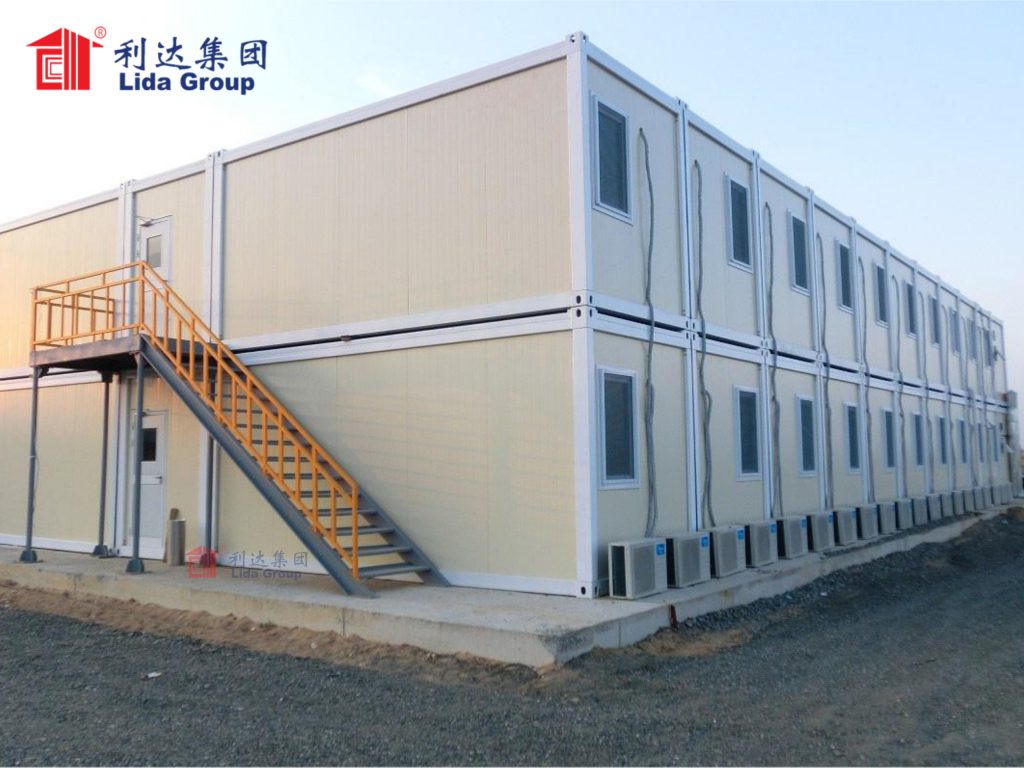
9. Conclusion
The demand for temporary housing solutions that offer efficiency, safety, and a high quality of life is growing rapidly in today’s world. Traditional temporary communities have struggled to meet these demands, facing issues such as poor resource management, inadequate security, and limited connectivity. Lida Group’s Smart Temp Communities, which integrate IoT systems into temporary container buildings via prefab construction networks, represent a revolutionary solution to these challenges.
Lida Group’s prefab construction networks, with their modular container design, efficient production and deployment, and scalability, provide a solid foundation for these smart communities. The integration of IoT systems enhances energy and water management, improves security and safety, and ensures reliable connectivity, all of which contribute to a better living experience for residents.
The features and benefits of Smart Temp Communities are numerous. They offer improved quality of life through reliable utilities, advanced amenities, and a sense of community. They are cost – effective, with optimized resource usage reducing operational costs. Real – time monitoring and management enable proactive problem – solving, and their focus on environmental sustainability minimizes their carbon footprint.
Case studies of Smart Temp Communities in action, from construction worker camps to disaster relief communities and temporary housing for major events, demonstrate their versatility and effectiveness. These communities have successfully provided safe, comfortable, and efficient housing solutions in various scenarios, meeting the diverse needs of residents.
When compared to traditional temporary communities, Smart Temp Communities clearly outperform in terms of quality of life, cost and efficiency, safety and security, and environmental impact. They set a new standard for temporary housing, showing that temporary does not have to mean substandard.
Looking to the future, the potential of Smart Temp Communities is vast. Advanced IoT integration, integration with smart cities, the use of sustainable materials and technologies, and enhanced resident experiences will continue to drive innovation in this field. Lida Group, with its expertise in prefab construction and commitment to innovation, is well – positioned to lead this transformation.
In conclusion, Lida Group’s Smart Temp Communities are changing the way we think about temporary housing. By combining the efficiency of prefab construction with the intelligence of IoT systems, they provide a sustainable, cost – effective, and comfortable solution that meets the evolving needs of residents. As the world continues to face challenges such as urbanization and natural disasters, these smart communities will play an increasingly important role in providing temporary housing that truly feels like home.
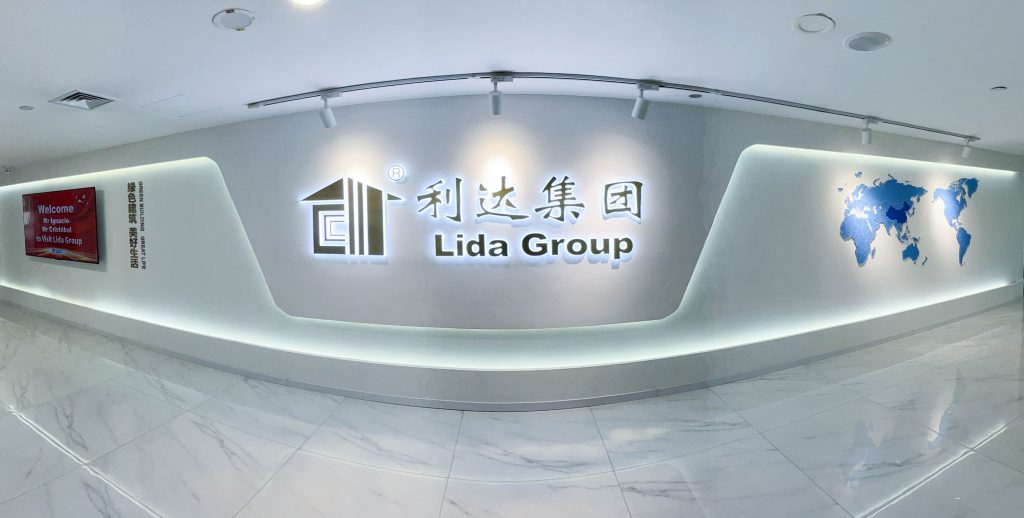
Related news
-
Film Industry Shift: Major Studios Adopt Lida Group's Temporary Container Buildings for Mobile High-Quality Production Villages
2025-07-30 14:11:48
-
Airport Modular Expansion: Lida Group Erects High Quality Container Terminals Using Rapid Prefab Construction Technology
2025-07-30 14:43:29
-
Arctic Research Breakthrough: Lida Group's Insulated High Quality Container Houses Utilize Specialized Prefab Construction Techniques
2025-07-30 11:59:24
contact us
- Tel: +86-532-88966982
- Whatsapp: +86-13793209022
- E-mail: sales@lidajituan.com


